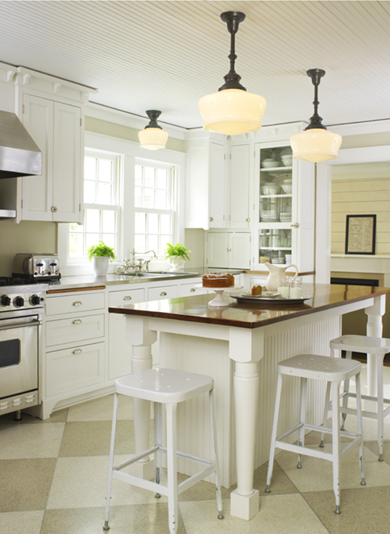The Kitchen Remodelling Guide
by Jimmy B. ConsultantYou have kitchen remodelling on your mind. What to do now? Not knowing where to start, many home owners fall into two groups. Some start by checking out appliances. Others collect inspiring kitchen photos. That stage may get you stuck for a long period of time before you start interviewing kitchen designers or contractors.
Once you're done with this phase, you'll be ready to start a kitchen remodelling project, then what? Here I have a summary of the first few steps and I'll get into details under specific steps as we move trough the guide.
First, gather inspiration. This step is all about finding your preferred style using every resource possible, including design books, photos, magazines and blogs. It can be organized and beautiful like a scrapbook or it can be filled with random images. I prefer the last one, because I like to stuff images into my folders and go back to them later for edits.
Second, explore your style. You should go ask yourself these questions – do you like modern, classic, traditional, cottage or something in between? What colour do you prefer – a white one, a natural wood type, or anything else? What you think about flooring?
Usually, people get overwhelmed when thinking about all these decisions at once – so don't. Who says you have to? Just add those kitchen inspiration images to your folders without thinking about why you like it, and worry over the details later. It's so much easier and more fun this way.
At this point, it would be nice if you start looking for a designer or an architect as well, if that's in the cards for your type of project. Some people hire a design professional right away to help them go through the inspiration-gathering process. Others hire a contractor to implement their ideas, and some, with the time and skill, may choose to do it themselves.
Next, you get to the research and
plan. Are you ready to begin that project and take the plunge? The
best place to start is by formulating what's commonly referred to as
a scope of works and figuring out your finances.
Don't feel like you have only one chance at this, as both of these may be subject to change. Budget and scope are intertwined and often change many times during the design process as you become more educated and able to reconcile what you want and what you can get. As a home owner, you're not expected to walk into this knowing what everything should cost. Remember, this is just the “learning curve”.
Hire professional help if needed. Even if you're DIY, unless you're building your own kitchen cabinets and doing your own electrical and plumbing, you're going to have to work with a professional at some point. It may be as brief as leaning on your salesperson to help you in selecting and ordering your appliances or cabinets, or getting the help of professional builders cleaning from Fantastic Cleaners Kingston. It's something to plan on, either way.
Then you get to the schematic design. This step includes sketches, space planning, preliminary floor plans and elevations showing the layout and cabinet size. You'll look at colour studies and talk about finishes and fixtures such as cabinet colour, flooring and tile options, colour palette, back-splash and counter-top materials.
The final selection of finishes and fixtures is made. This usually includes:
cabinetry construction type, finish and colour, door style
counter-top material
refrigerators and other appliances
sink and faucet
light fixtures
flooring
back-splash
decorative hardware
Work on design development and construction documents. This is the phase when you finalize the design and prepare final floor plans, elevations, details and, if applicable, mechanical and electrical drawings, lighting switch plans, and exterior elevations.
It's important to have finishes and fixtures selected at this time, since this is what will be considered in the final pricing from the contractor.
Now, its time to get contractor
estimates. On occasion, this step happens earlier in the process; it
depends on the type of job. I always recommend to my friends to get
at least 3 different contractor estimates. I like to do preliminary
walkthroughs with the contractors once the schematic designs are done
so we can get some ballpark estimates and find out if we're on the
right track or need to pull back some to fit the budget.
Get ready! The big day is near, most likely something like 4-8 weeks from when you submitted for permits. Time to get that schedule firmed up and plan on cleaning out the cabinets, putting what you don't need in storage and – if you're living in the house during construction – setting up a temporary kitchen so you don't loose your mind.
Surviving the punch list is the last step. Once construction is over, or almost over, there is always this annoying list of items that are missing, wrong, or simply forgotten about. A missing light switch plate, a caulk line that shrank and pulled away from the wall, paint touch ups – small things like this, and sometimes bigger things like the hood doesn't work, or there's a big scratching the newly refinished floor.
It is inevitable that the contractor may have to make multiple visits back to the house to fix and finish these stuff. Prepare yourself for more than one visit and you'll be fine. The best way to approach this is with a calm attitude. It is sort of like making a list for the grocery store and still forgetting some key products. It's a normal thing.
Sponsor Ads
Created on Dec 31st 1969 18:00. Viewed 0 times.



